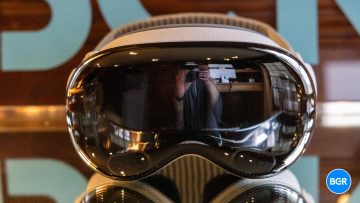Tiny space rocks fly past Earth all the time, but it’s rare that a potential planet-killer makes an appearance in our neck of the woods. Earlier this month a massive asteroid named 3200 Phaethon passed by our planet at a totally safe distance of about 1.1 million miles. Researchers used the opportunity to get a better look at the potentially hazardous object and actually learned quite a bit about it.
Using the Arecibo Observatory Planetary Radar in Puerto Rico, scientists were able to capture the sharpest images ever of the object while also getting a more accurate idea of its overall size and shape. As it turns out, the rock is even larger than anyone thought.
As NASA explains in a lengthy post, the newest observations of 3200 Phaethon revealed it to be roughly 3.6 miles in diameter, which is over half a mile larger than any previous estimates. The rock was already considered to be a potentially hazardous asteroid based on earlier size estimates, so this news only reaffirms that notion.

In terms of appearance, 3200 Phaethon is a slightly oblong sphere with what appears to be a large depression, perhaps a crater, marking one of its ends. One of the asteroid’s poles is dotted with what NASA calls “a conspicuous dark, circular feature,” though they aren’t certain what it actually is.
These images were only possible thanks to the hard work of individuals ensuring that the Arecibo observatory would be ready in time to capture the asteroid’s close pass. Located in hurricane-ravage Puerto Rico, the observatory was actually shut down for several months following the devastation wrought by Hurricane Maria.
“Arecibo is an important global asset, crucial for planetary defense work because of its unique capabilities,” Joan Schmelz, deputy director of Arecibo Observatory, explains. “We have been working diligently to get it back up and running since Hurricane Maria devastated Puerto Rico.”








